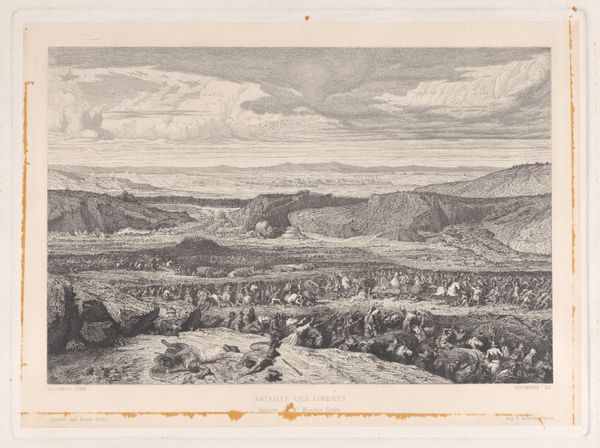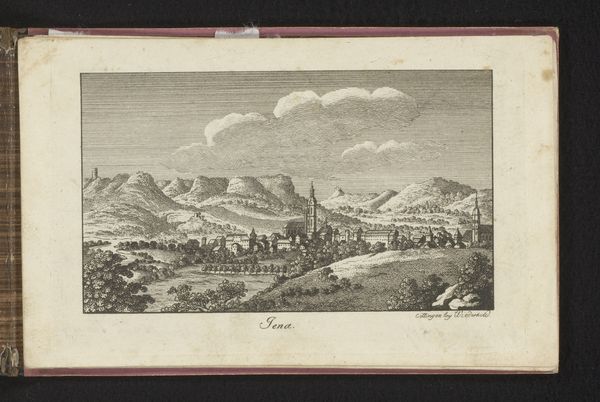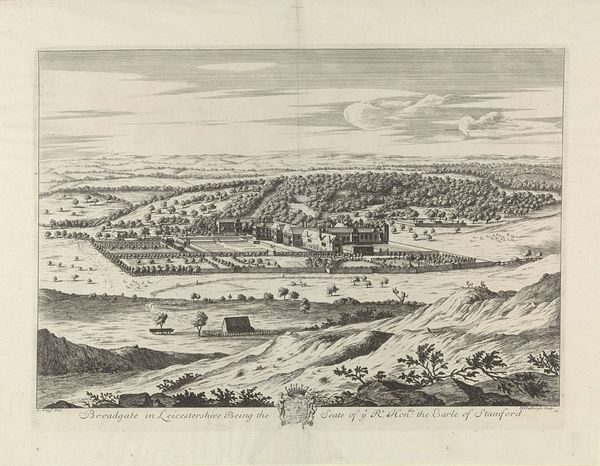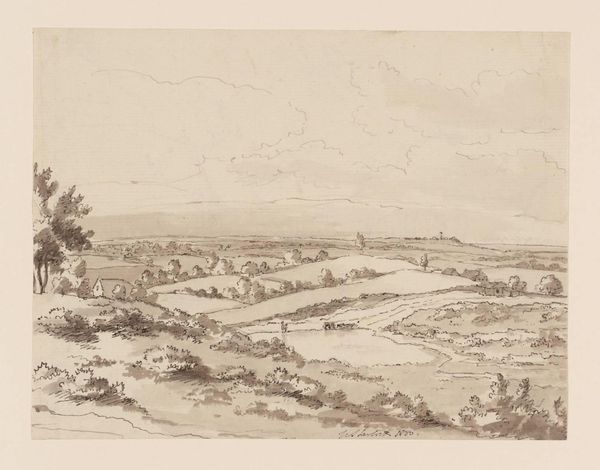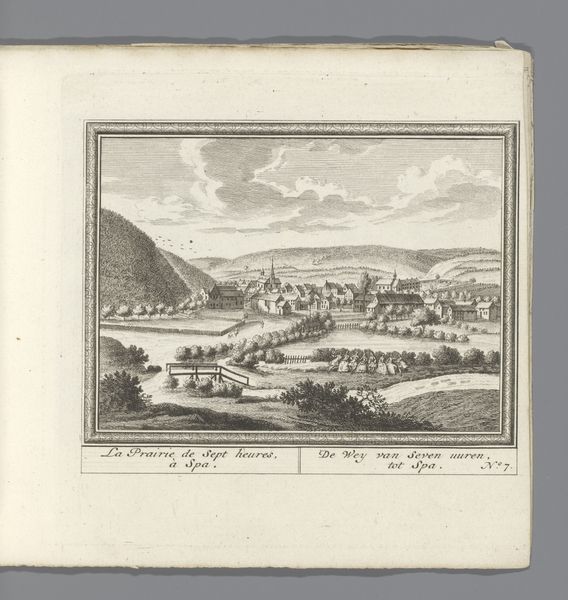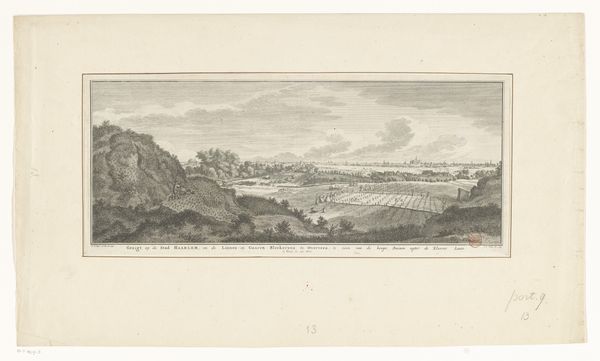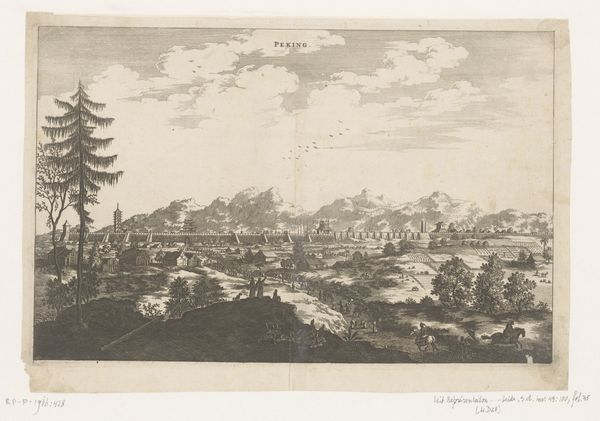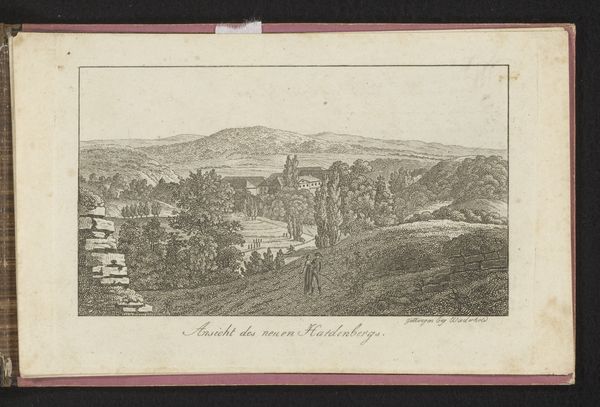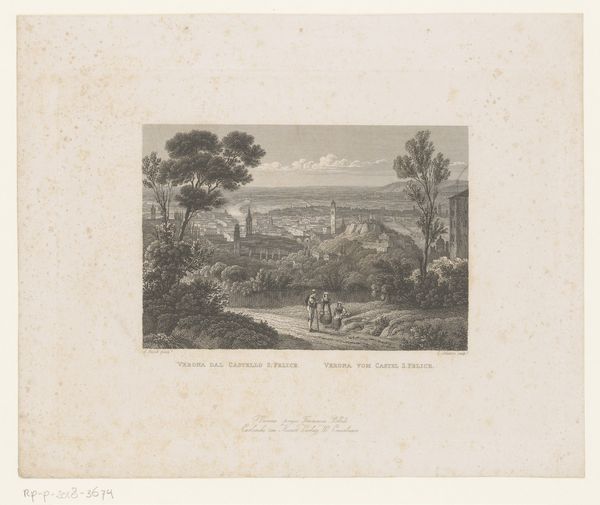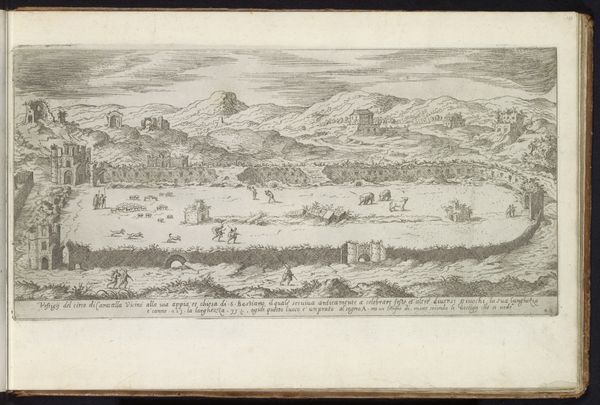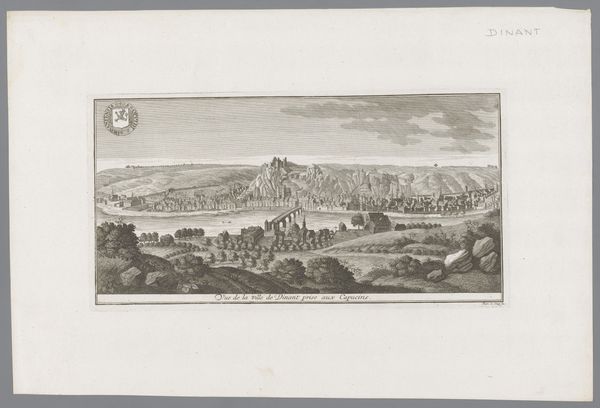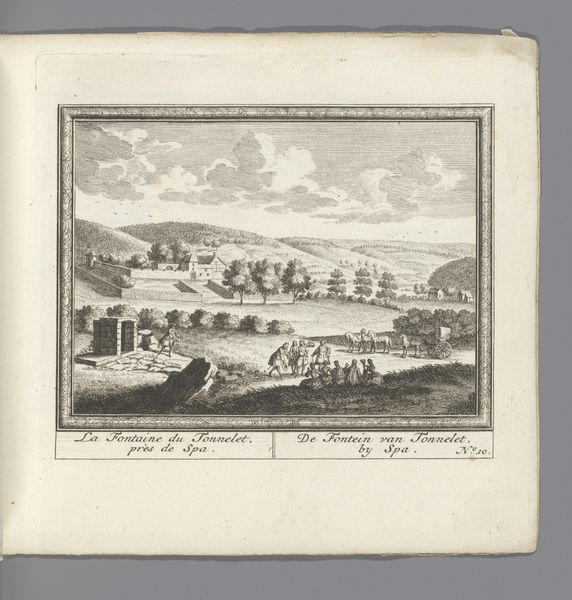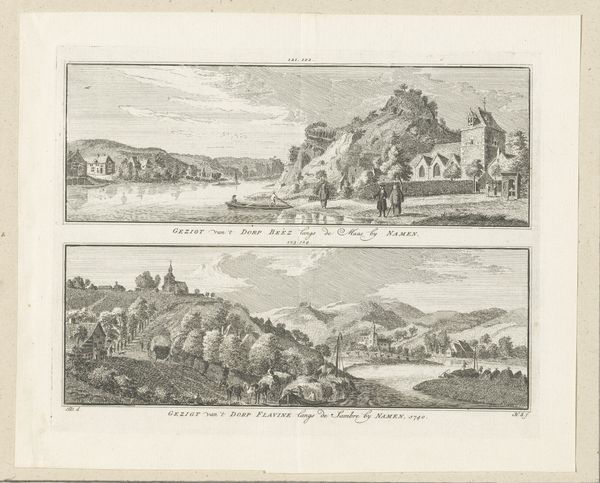
print, engraving
# print
#
landscape
#
romanticism
#
engraving
#
realism
Dimensions: height 440 mm, width 591 mm
Copyright: Rijks Museum: Open Domain
Curator: What a remarkably somber scene. Editor: It is, isn't it? This is an engraving from 1845 by Claude-Félix-Théodore Caruelle d'Aligny, titled "Gezicht op de Cycladen," or "View of the Cyclades." Curator: The ruins in the foreground dominate the view. They’re almost suffocating, as if nature is trying to reclaim the site of a once great civilization. There's a real sense of decline here, a memento mori in stone and ink. Editor: I see it too, but I’m also struck by the formal choices. Look how the artist has created depth. The light and shadow play across the broken columns, leading our eye toward that distant coastline. It's almost mathematically precise. Curator: Perhaps d’Aligny was drawing a parallel. A visual metaphor for the rise and fall of empires, the fleeting nature of human achievement set against the enduring presence of the natural world. Remember that in this era, Romanticism was often entwined with Realism, depicting harsh truths. Editor: But it also elevates ruins, doesn't it? Transforming them into picturesque subjects of contemplation. See the subtle gradations of tone, the almost loving detail in the depiction of fractured forms. Curator: That's the peculiar pull of the romantic era—the allure of ruins symbolizing the loss of classical grandeur, inviting the audience to question their own epoch against that backdrop. It became a symbol of national and political significance throughout Europe. Editor: Well, whatever its deeper meanings, from a purely visual perspective, the artist has achieved a striking balance. The severe geometry of the ruined columns, offset by the wild, scrubby landscape. It draws the eye, invites close looking. Curator: It does make you ponder about history, about what came before and what lasts. Editor: Yes, it’s a powerful combination. Curator: Indeed, the engraving makes us contemplate not just art but its reflection of power. Editor: Yes, the artist makes us aware of beauty as well as time, a rather beautiful elegy for a vanished world.
Comments
No comments
Be the first to comment and join the conversation on the ultimate creative platform.
